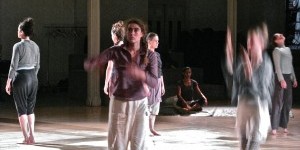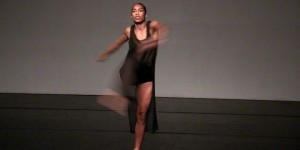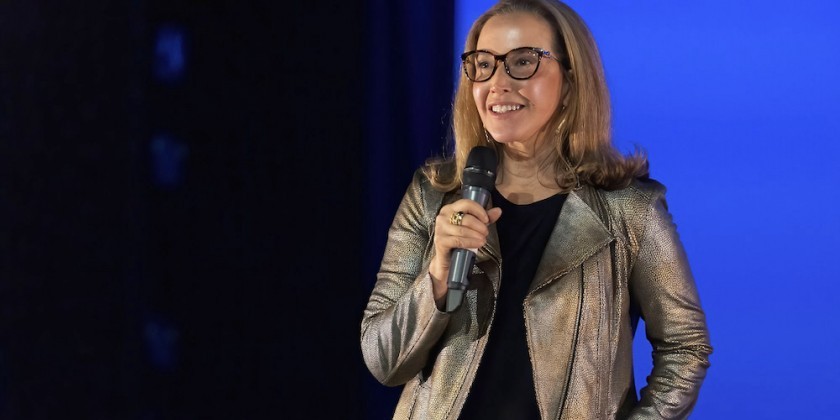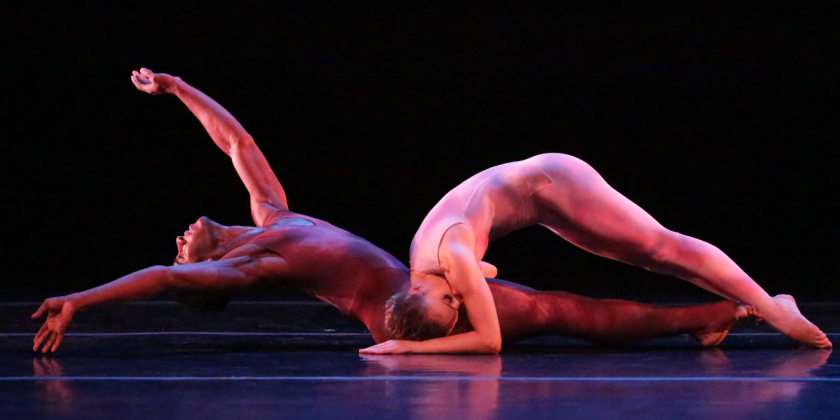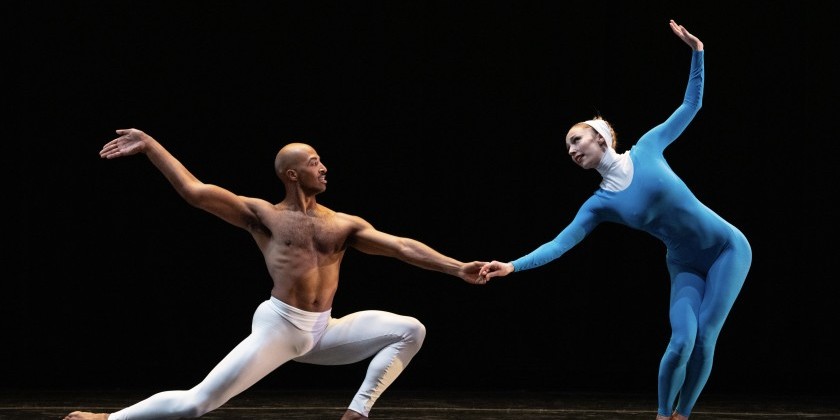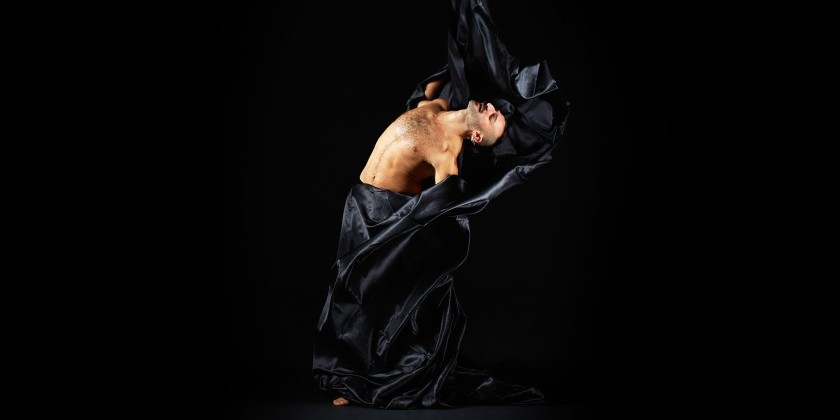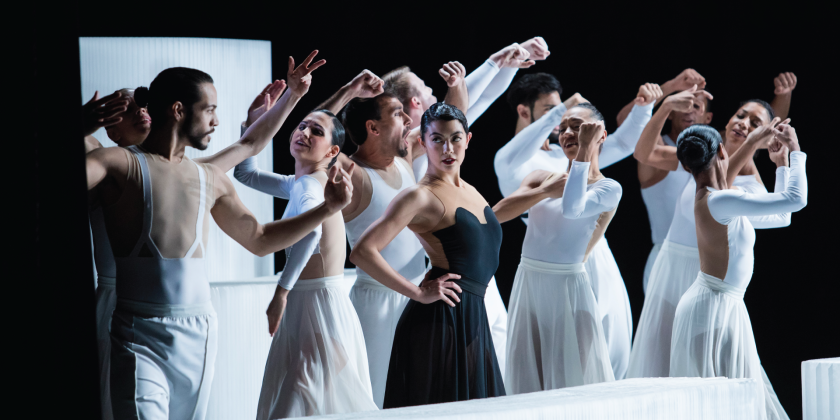Impressions of Danaka Dance's “Thousand Plateaus”
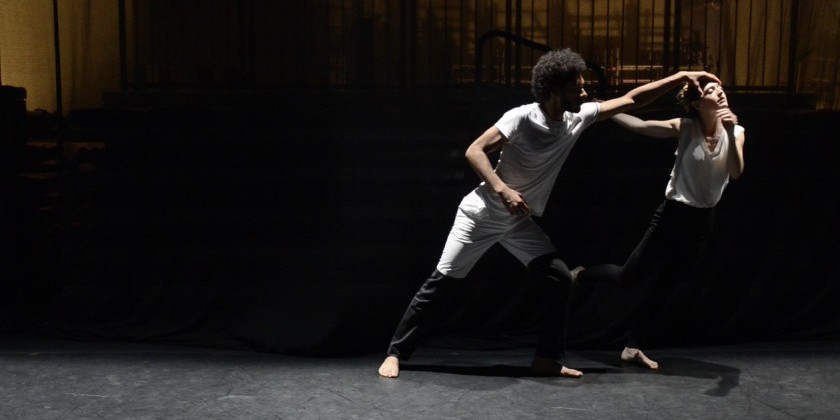
Presented by: The Irondale
Choreography, Concept, Direction: Danah Katz
Performers: Catherine Correa, Danah Katz, Brandon Washington, Chihiro Shimizu, Kristin Swiat
Sound Design: Ophir Leibovitch
Costume Design: Naomi Luppescu & Danah Katz
Lighting Design: Amith A. Chandrashaker
Production Design: Orly Anan with Assistants Daniella Garcia-Rosales and Josefina Santos
Graphic Design: Oded Ben Yehuda
In January, Danah Katz presented Thousand Plateaus as a work in progress at the 92nd Street Y. Since the initial showcase, Katz has colored in an outline, erased arbitrary sketch marks, and added some shading, all to provide us with a more robust experience. The piece offers a unique experience to each audience member through different combinations of individual puzzle pieces, or “plateaus.” The accumulation of elements is a final product, which stimulates without overloading.
The majestic Irondale Theater plays backdrop to Katz's exploration. As at the Y, Thousand Plateaus features reverse theater-in-the-round seating; the audience sits in a square formation in the center as four solos rotate. No audience member sees exactly the same show; our perspective influences our perception of the work. From the balconies, which loom high above the stage, a team of visual artists sketches the performers from a bird’s eye view, and we feel as if we are in the center of a spiraling vortex of action.
We see the influence of Katz's film background in the cinematic nature of the piece as wisps of vignettes creep into our spectrum of awareness. Because of the nature of the seating situation, Thousand Plateaus does not guide our focus with a firm hand. Rather, we have considerable choice as to how our experience unfolds. There is always a solo performance occurring directly in front of us, but there’s also the option to seek out the action in other quadrants. At one point, we hear a woman's maniacal laughter from somewhere behind us, alluding to something fascinating and mysterious, and we are compelled to turn our focus to find its origin.
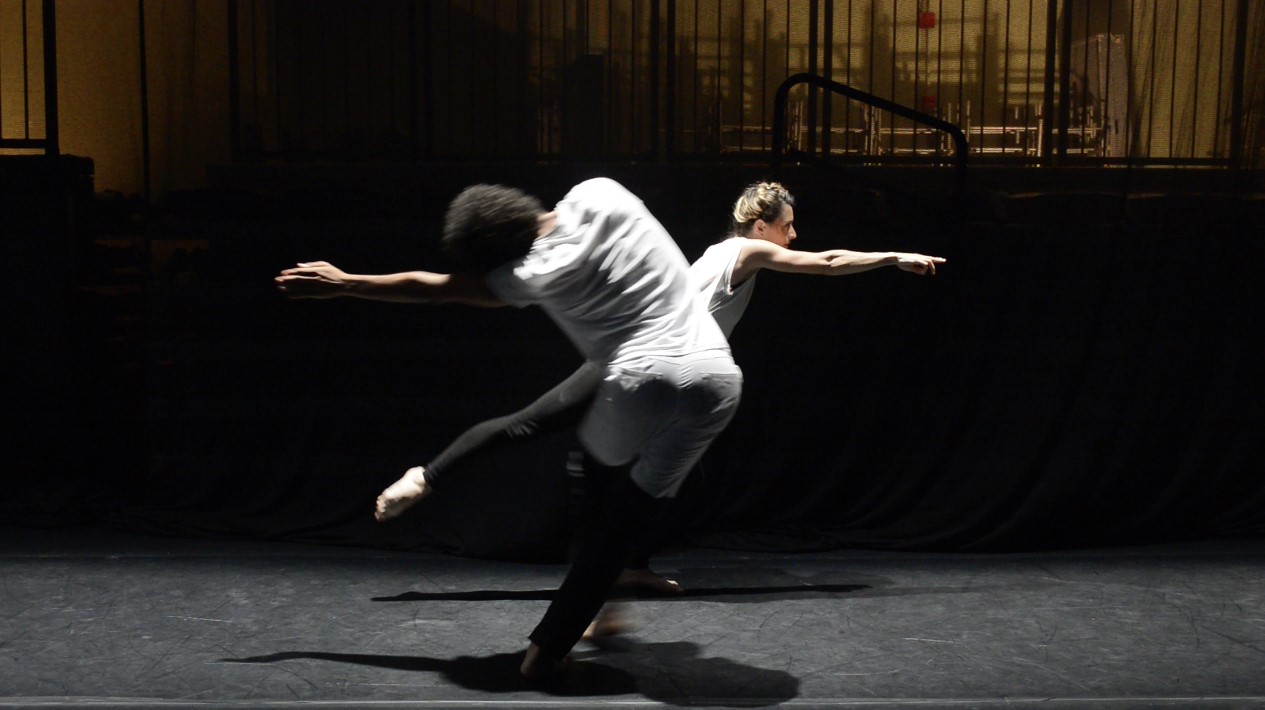
The solo performances are so enticing that they could stand-alone; each captures our attention in a unique way. Dana Katz moves with the smooth sensuality of a cat in a solo like cursive writing. Chihiro Shimizu’s material is nimble and frantic, comingling short sharp gestures beside moments of stillness to keep us on our toes. Kristin Swiat’s signature move is a bouncy walk with her head bobbling as if her neck can no longer support its weight. She juxtaposes airy dance moves with moments of remarkable control, gilding her leg up ever so slowly as her arms float to her side like majestic wings.
The most enticing character performance is Catherine Correa’s. She traipses around in high heels like a runway model, cockily juxtaposing incredible rodent-like speed with moments of dead stillness. Even before her solo performance rotates to my side, I can hear her cavalier laugh echo through the vast halls of the Irondale, accenting the dramatic heartbeat pulse of Ophir Leibovitch’s score.
Brandon Washington is a "floater" of sorts — he drifts amongst the soloists, sometimes partnering the women. Occasionally, he acts as a catalyst, and at a punctuating point in the piece, Washington begins a lofty run around the space. The music changes from an ominous pulse to pounding techno; lights flash, and there is a moment of extremes, where urgency and pleasure occupy the same space. The volume of music increases while the lights and the movement reach an apex of intensity. And then, suddenly, everything softens.
Katz adeptly weaves a vast array of elements into this tightly knit construction. Despite the various disciplines and props, the work feels cohesive, not arbitrary. Thousand Plateaus, as it name suggests, doesn't pose a single overarching thesis. Instead, it presents a collection of intriguing images that the viewer, based on their perspective, can organize into perception.
As the piece draws to a close, the dancers exit the performing area and return bearing a glass of champagne in each hand. Will there be enough for the entire audience? Of course there isn't, but a few lucky observers have the opportunity to offer a congratulatory toast.
Follow Theo Boguszewksi on Twitter @theoboguszewski




